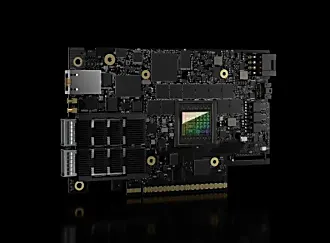Canonical
on 30 May 2018
OpenStack Summit Vancouver: Automating the data centre
Stu Miniman and John Boyer of theCUBE interviewed Mark Shuttleworth at the OpenStack Summit following the Canonical founder’s keynote in Vancouver. Read on for the full interview, and to hear more on the economics of cloud.
Rethinking the data centre to make it fully automated from the ground up was the opportunity presented to architects at the OpenStack Summit in Vancouver. That is something that Canonical thinks very carefully about so that anybody can consume it at a reasonable price.
Cost may not be the most popular subject to ever be discussed at an OpenStack Summit, but it matters to those that want to adopt an open infrastructure without a cost burden.
Sometimes running and operating OpenStack in-house isn’t always the best solution, sometimes having a company like Canonical put it on rails is the way forward. Mark Shuttleworth, Canonical founder and CEO, told theCUBE: “It’s better for us actually to take it to people as a solution, explain your requirements to us then let us architect that cloud with you, build that cloud then let us operate that cloud. Until it’s all stable and the economics are good, then you can take over.”
OpenStack doesn’t have to be expensive. “When you consume OpenStack from Canonical it is much, much cheaper than any of your other options in your own private data centre. And I think that’s a success that OpenStack should be proud of,” Shuttleworth said.
Eight years after its inception and OpenStack and Ubuntu continue to be loved by telcos but in the last year there’s a new cloud growth story emerging in the financial services sector, one that has seen Canonical close deals with 20% of the top 20 banks in the world building on Ubuntu based open infrastructure. Shuttleworth said: “That’s a huge shift from the traditional dependence exclusively on VMware, Red Hat. Now, suddenly, Ubuntu’s in there, Canonical’s in there.”
From the core to the Edge
The Edge, which is currently defined by the boundaries of authority formed by groups inside large institutions, is far from being fully defined. However, whilst the Edge may still be in its infancy, it has been a hot topic at the OpenStack Summit.
Key problems need to be solved, such as physical provisioning but they are being attacked by large institutions using Ubuntu. “The one thing that is true with every Edge deployment is there are no humans there,” said Shuttleworth.
“So you can’t kind of band-aid over the idea that when something breaks you need to completely be able to reset it from the ground up.”
The solution, which shows up in the reference architectures from AT&T, SoftBank and Deutsche Telekom, as well as numerous others, is MAAS, because it solves the customer problem thanks to being the smallest piece of software than can be used to take one or 10 servers, or 100 servers and reflash them with Windows, or CentOS or Ubuntu, whatever is needed.
Find out more about MAAS at maas.io
The second problem is an economics one. The problem is that in the different Edge cloud combinations there is a toxic overhead. Mark Shuttleworth said: “ If you need three nodes of overhead for a hundred node OpenStack, it’s 3%. For a thousand node OpenStack it’s .3%. It’s nothing, you won’t notice it.
“But if you need three nodes of OpenStack for a nine node Edge cloud, well then that’s 30% of your infrastructure costs. So really thinking through how to get the overhead down is kind of a key for us.”



